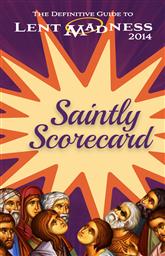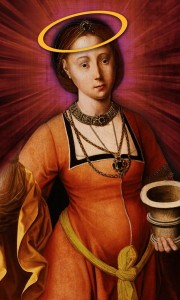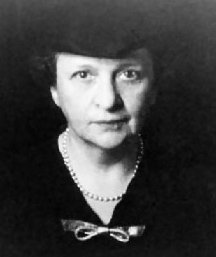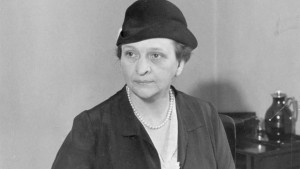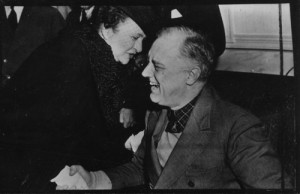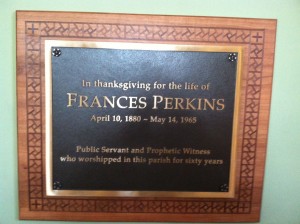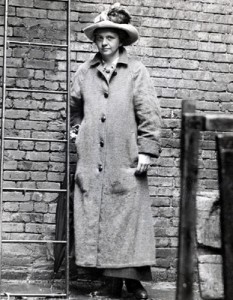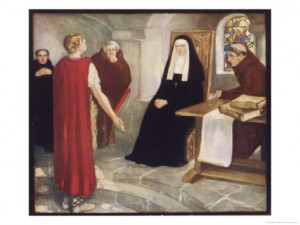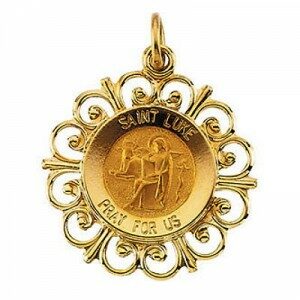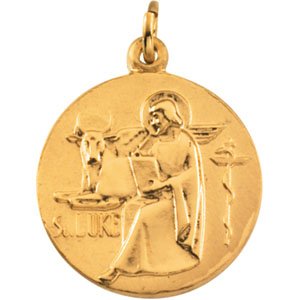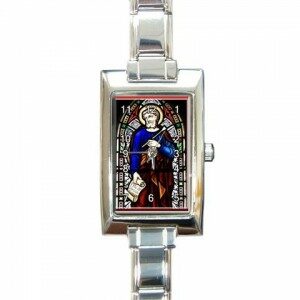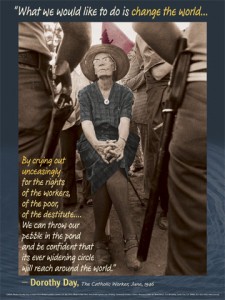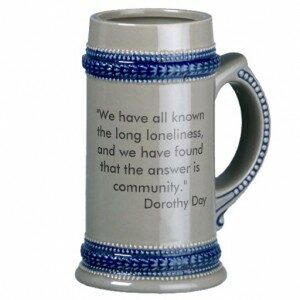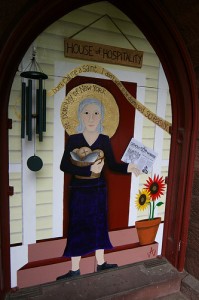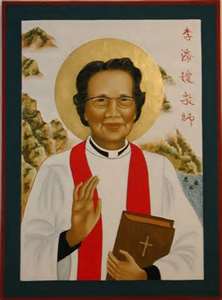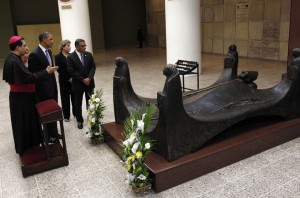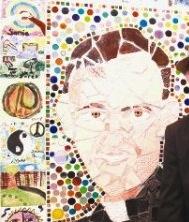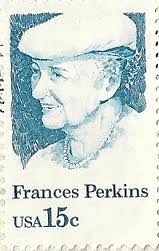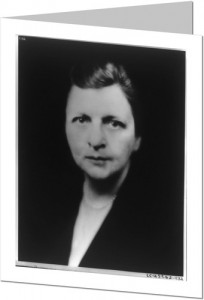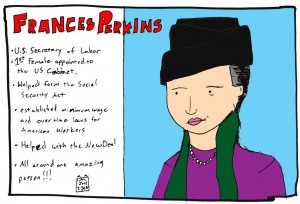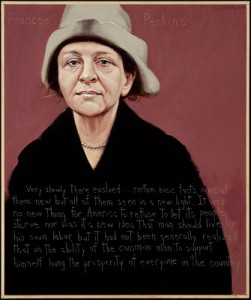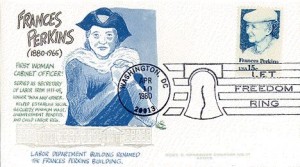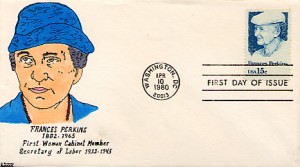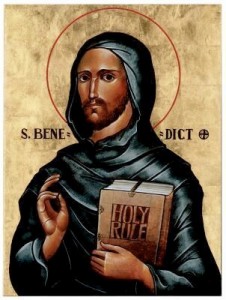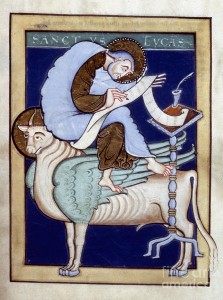Today we offer you an amazing pre-Lenten gift. No, it's not a hair shirt -- you'll have to find one of those on eBay. It's a free, no-strings-attached newsletter/website article ghost written by the Supreme Executive Committee about Lent Madness 2014. Feel free to use it (for free!) in your church's publications. If you are a parish administrator or communications specialist, this is your lucky day. If you are a priest that's on deadline and you've used one of your three wishes from the genie that came out of the oil lamp you stumbled upon in the undercroft on the magic appearance of a newsletter article, consider it granted.
That's not all, of course. Besides newsletters, this material can be used to e-mail friends and family, as graffiti around the neighborhood (note: the SEC has an ironclad alibi), by skywriters hired to spread the word, or applied in needlepoint to kneelers.
But please don't think of this as mere "filler." Think of it as "ful-fill-ment." And note that if you encounter any typos or prevarications, Scott and Tim will blame the other for the oversight.
But...in the spirit of the famous Ginsu Knives...that's not all! Use this article now and we'll throw in free widgets for your website or blog!
Lent Madness 2014
The Saintly Smack Down!
Grit, determination, perseverance. These are the traits, along with the obvious one -- holiness -- that will be needed to win the 2014 Lent Madness Golden Halo. Based loosely on the NCAA basketball tournament, Lent Madness pits 32 saints against one another in a single-elimination bracket. It is also a wildly popular online devotional designed to help people learn about saints.
Lent Madness began in 2010 as the brainchild of the Rev. Tim Schenck, an Episcopal priest and rector of St. John’s Church in Hingham, Massachusetts. In seeking a fun, engaging way for people to learn about the men and women who make up the church’s calendar of saints, Schenck came up with this unique Lenten devotion. Combining his love of sports with his passion for the lives of the saints, Lent Madness was born on his blog “Clergy Family Confidential.”
Starting in 2012, Schenck partnered with Forward Movement (the same folks that publish Forward Day by Day) executive director the Rev. Scott Gunn, and Lent Madness went viral, reaching over 50,000 people and getting mentioned in everything from the Washington Post to USA Today, to Sports Illustrated (seriously).
Here’s how it works: on the weekdays of Lent information is posted at www.lentmadness.org about two different saints. Each pairing remains open for 24 hours as participants read about and then vote to determine which saint moves on to the next round. Sixteen saints make it to the Round of the Saintly Sixteen; eight advance to the Round of the Elate Eight; four make it to the Faithful Four; two to the Championship; and the winner is awarded the coveted Golden Halo.
The first round consists of basic biographical information about each of the 32 saints. Things get a bit more interesting in the subsequent rounds as we offer quotes and quirks, explore legends, and even move into the area of saintly kitsch. It’s fun, it’s informative, it’s the saintly smack down!
This year Lent Madness features an intriguing slate of saints ancient and modern, Biblical and ecclesiastical. The 2014 heavyweights include Thomas Merton, Catherine of Siena, J.S. Bach, David of Wales, John Wesley, Harriet Beecher Stowe, and Joseph of Arimathaea. The full bracket is online at the Lent Madness website.
New this year is the publication of the Saintly Scorecard -- The Definitive Guide to Lent Madness 2014. Available through Forward Movement, it contains biographies of all 32 saints to assist those who like to fill out their brackets in advance, in addition to a full-color pull-out bracket.
This all kicks off on “Ash Thursday,” March 6. To participate, visit www.lentmadness.org, where you can also print out a bracket for free to see how you fare or “compete” against friends and family members. Like that other March tournament, there will be drama and intrigue, upsets and thrashings, last-minute victories and Cinderellas.
Ten “celebrity bloggers” from across the country have been tapped to write for the project including the Rev. Laurie Brock of Lexington, KY; the Rev. Penny Nash of Williamsburg, VA; Dr. David Creech of Morehead, MN; the Rev. Megan Castellan of Kansas City, MO; Canon Heidi Shott of Newcastle, ME; the Rev. David Hendrickson of Denver, CO; the Rev. Amber Belldene of San Francisco, CA; the Rev. David Sibley of Brooklyn, NY; the Rev. Laura Darling of Oakland, CA; and the Rev. Maria Kane of Houston, TX. Information about each of the celebrity bloggers is available on the Lent Madness website.
If you’re looking for a Lenten discipline that is fun, educational, occasionally goofy, and always joyful, join the Lent Madness journey. Lent needn’t be all doom and gloom. After all, what could be more joyful than a season specifically set aside to get closer to God?
 Forward Movement is a ministry of The Episcopal Church dedicated to making disciples and sharing the Good News. With offices in Cincinnati, Ohio, Forward Movement has worked since 1935 to reinvigorate the life of the church.
Forward Movement is a ministry of The Episcopal Church dedicated to making disciples and sharing the Good News. With offices in Cincinnati, Ohio, Forward Movement has worked since 1935 to reinvigorate the life of the church.
NOTE:
High-resolution graphics are available upon request. News organizations and non-profits may freely use graphics from the Lent Madness website, with attribution. Free Lent Madness widgets for website are also available for download.
Contact: press@lentmadness.org


